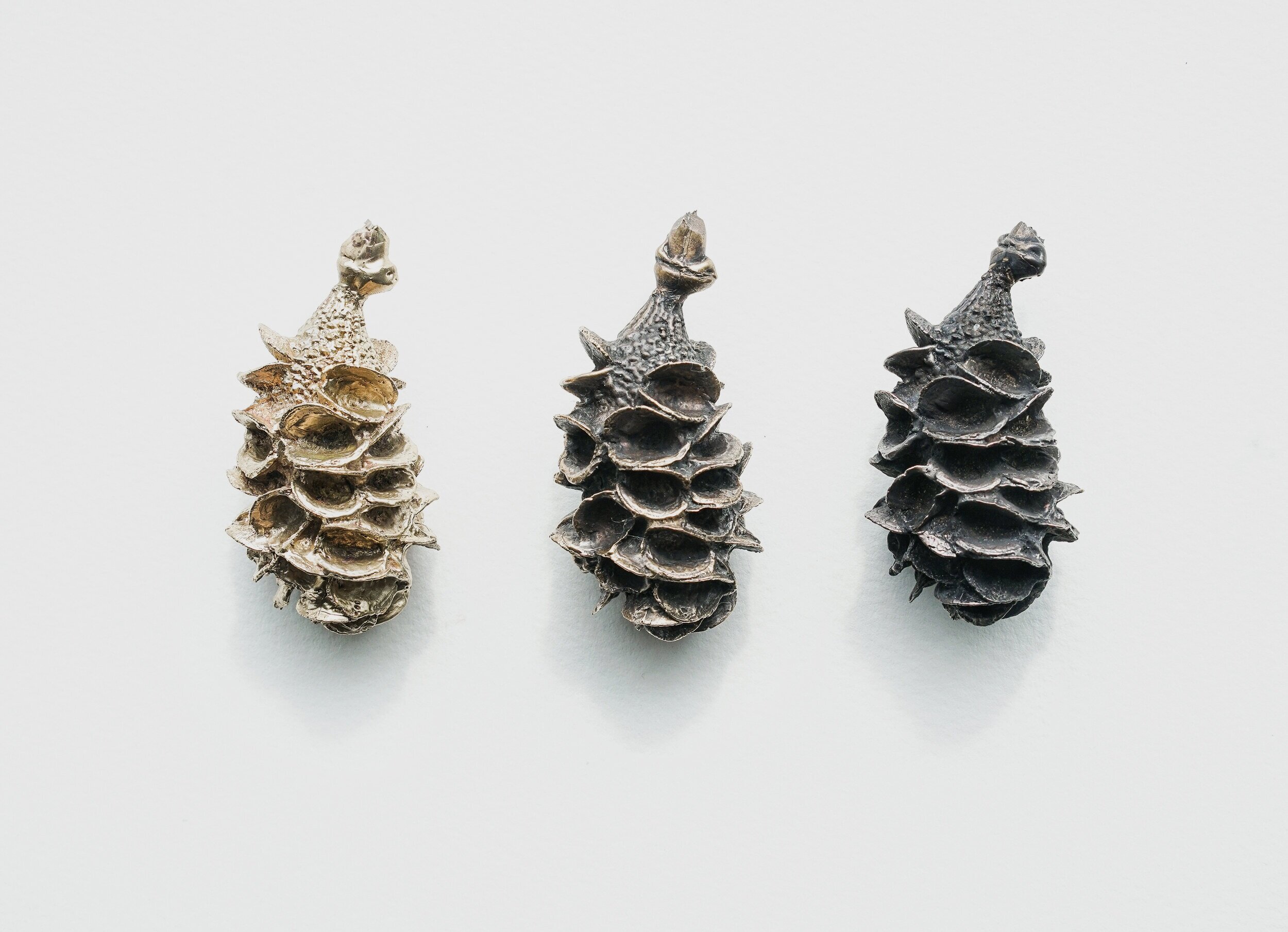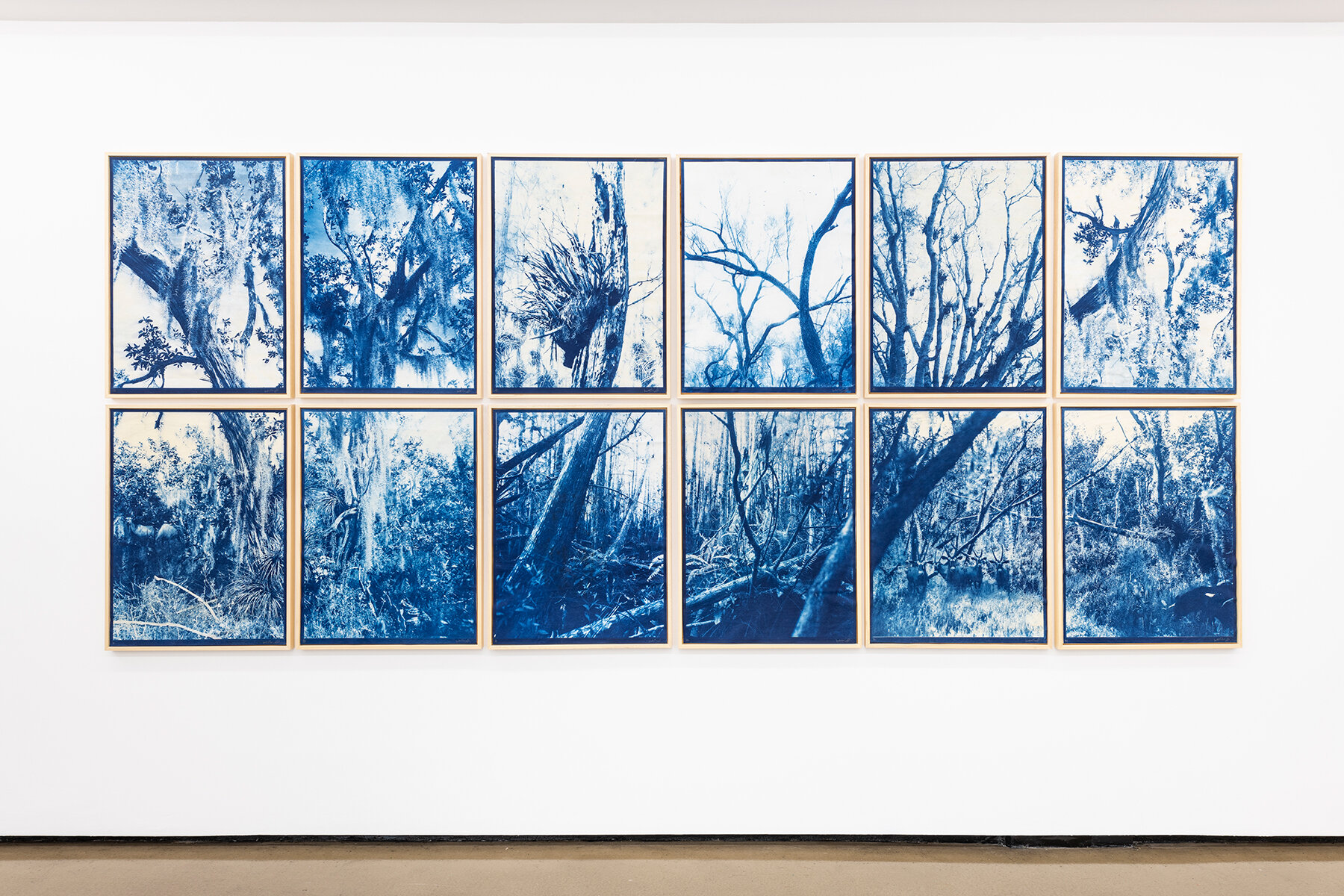Kristina Chan

“I tell stories. This is at the core of my practice.”
Interview by Simek Shropshire
Could you tell us a bit about yourself and your background? Where did you study?
I received my MA (Print) from the Royal College of Art, London in 2016. I’ve always been fascinated by print and alternative photography, working at various editioning houses in Paris and South Africa between my undergraduate and postgraduate degrees.
Travel plays a big role in my work. It is site-specific. Often, I will spend years researching and documenting a specific place. This can be a constructed environment, or it can be a natural one. I am interested in the history of a place, often socially or ecologically, and how the specific and individual can become universal. There is a relatability in these places. They are felt. This is what I try to express with each work, that initial impulse that tells us “something happened here” and drives us to find out more.
Your practice is site-specific, focusing significantly on disused spaces. What is your process for selecting a site as the subject of a collection and/or the location of an installation? What attracts you to these specific places?
I tell stories. This is at the core of my practice. Each of the sites I chose to do this. I suppose that’s what I’m drawn to. But the search happens quite organically. They’ve begun to feel self-generating. One place leads to another. Sometimes it is a commission, other times it is self-initiated.
The spaces themselves need to be felt. Almost immediately, and without context: as if you can feel that something significant has happened. It’s this sense of misplaced context that I love. It’s a big part of my work, this anachronism, and displacement.
Being out of time and out of place: it’s much more than a physical phenomenon. All these months of lockdown have certainly taught us this. It’s metaphorical and personal. These places exist, persist even. Through them, we get to see their architecture, grandeur, resilience, and shortcomings. They personify and become case studies on a timescale much longer than our own. We become privy to a new scale and with it the hindsight and reflection not available to us in a single lifetime.
And this is interesting to me: this idea of human impact. It’s not necessarily purely disused spaces. I also look at more natural and geographical places. It is the ramifications that interest me. They can be environmental or industrial, political or cultural. In fact, they often intersect.
In what ways does the physicality and materiality of your works interact with the sites?
I try to reflect the spaces in the mediums used to express them. With Stage Right (2017), a work commissioned by the Hidden Door Arts Festival of the abandoned Leith Citadel Theatre in Edinburgh, I was drawn to the similarity in a pallet of the 1920s art deco theatre and the intricate patterns of mould and water damage. The brilliant greens and blues that emerged seemed to fit seamlessly after nearly 30 years of uninterrupted growth. They seemed to wallpaper the walls. I chose to install the works directly on the wall of the theatre in the same way, so when the renovations were completed and the doors reopened to the public for the festival later that year, the stood in direct contrast with the refurbished space-showing how the past and present can occupy the same space.
In Carriage (2018), a collection exploring a train wreck in the Pacific Northwest, I was drawn to the stark contrast between the bubbling rust of the iron train carriages amid the backdrop of this idyllic, endless wilderness. For these works, I decided to print on wooden panels, then paint and engrave directly onto them. Like the forest, the train interrupted the grain, cut the ground they landed on, and yet, after so many years (and layers), seemed to become part of the scene they inhabited.
In Between Our Seas (2015-2017), a work about the Cango Caves in South Africa, a single phrase that drove this entire series. “These caves are dead,” whispered our guide. It was so resonating and haunting, I had to learn more. I learned that geologically caves are described as alive or dead: alive so long as they are hollowing. Death comes when their dimensions fix. It was a measurement determined by its void. And so I created a labyrinthine scene, combining all the chamber entrances along a single pane, entrances into an indeterminate space.
Understory II, 2020
Understory, 2020
Ferns, 2020
Outlook, 2020
Struck, 2020
Banksia Seeds (3 States), Bronze, 2020
When speaking about your project "Stage Right" (2017), you've posited that you "want to understand how [humans] mark the world and how, it, in turn, marks us. The relationship between the natural world and what we build in the name of civilisation, culture, and history. The rise and decline and recurrence of it all, how monuments become ruins then relics, listed and condemned, rehabilitated, developed, and revitalised anew". In addition to socio-culturalism and resurrection, your practice, in some ways, serves as a meditation on memory and the passage of time. Would you say that it has a commemorative quality?
I would say it was more resuscitative. There is something very cyclical in the way we define space. It is also hypocritical. Definitions change over time, and I’m fascinated by this; it is so telling. Spaces have many iterations. When we speak of buildings, we use terms like renovation, development, ruin, condemned, listed. These describe the different stages of its life. Each is an allegory. The words we use say a lot about the way we choose to live our lives.
There’s a correlation with the medium here, in particular, with printmaking. Perhaps because it is a traditional medium. In my practice, I work with printing presses centuries old and it’s a similar feeling. From early on, we are taught how to “read” a plate. We study the length and depth of lines and begin to see the draughtsman who carved it. Taught to see the deepening of the groove as the needle slows, the hesitation on a curve, and the burnishing out of mistakes. We see where he is confident and where he is not. If his expertise lies in architecture or portraiture. Where his patience runs out and where he gains it back again.
These are all marks that tell a story hundreds of years old. They reanimate before our eyes. And include us. In those brief moments, these people come alive and we are able to converse with them, perhaps not quite through words, but another language altogether, one that defies time.
And it is this weaving of experience I try to express in my work, what I call, a felt history. A story that we interrupt by coming across it, merging timelines, if you will. When this intersection happens, our narratives collide into experience.
Stage Right (2017)
Stage Right, installation view, Hidden Door Arts Festival, Leith Theatre, Edinburgh 2017
Stage Right, installation view, Hidden Door Arts Festival, Leith Theatre, Edinburgh 2017
Dream in Blue, Cyanotype, Kristina Chan and Itamar Freed, 2019. Beers London, Photo by Damian Griffiths
Lucid Dreams, Beers London, July 2020, Kristina Chan and Itamar Freed, photo by Damian Griffiths
What artwork have you seen recently that has resonated with you?
These months of lockdown has been a time of great reflection and research for me. I’ve recently rediscovered a lot of work by artists I’ve found inspiring.
I’m endlessly inspired by Alex Hartley, A Gentle Collapsing II (2016), and The Houses, (2016-present) in particular. William Kentridge, too. I find myself drawn to his work, most recently Untitled (Lacking the Courage of the Bonfire (2019) and Model Opera (2015). Julie Mehretu and Sarah Sze, as well.
They pulsate between confinement and freedom, order and chaos, playing on the natural and constructed environments. They challenge mediums, flowing effortlessly between sculpture and photography, installation, print, and painting. I aspire towards that.
Their works challenge this very idea of where we think we are, how we occupy and interpret the places we inhabit. How we challenge and succumb to them and pose a very important question. Can we break free? There are no absolutes to these questions, only moments and progressions. We see this represented in an array of ways, from a multitude of angles, but time remains the underlying factor: how it passes and what we can learn from hindsight. These works ask us to look at the consequences of our actions.
What visual references from everyday life do you draw upon in your work?
Recently I’ve been looking at windows. I’m constantly fascinated with the concept of framing. Framing the world, composing it, through our lens. Similarly, fences and boundaries lines astound me, dividing expanse into digestible, containable pieces. There’s something absurd in how we feel the need to contain everything. I’m not exempt from this. I don’t think anyone can be. We put ourselves in little boxes and then complain about restraint.
Maybe that’s why I often venture out into such remote places for my work. It’s an attempt to reframe and re-contextualise. The canvas has its borders, so I know I can’t escape it entirely, but it’s been pointed out to me that my work rarely has a ground. While these spaces are filled with depth, there is also a precipice: an alluring invitation, but with it, a danger of falling in.
It’s safe to say I like the edges of things. With that comes an interest in postcards and old photographs. I enjoy how a damaged negative somehow immediately becomes nostalgic, or how a faded photograph is antique. Our associations craft their own narrative and there’s a lot of room to play within this.
Carriage (2018)
Between Our Seas (2015-2017)
Is there anything new and exciting in the pipeline you would like to tell us about?
2021 is an exciting year of both new projects and the exhibition of postponed work, due to COVID. This last year has been challenging, to say the least, but it has also taught me to think more laterally and creatively about how I approach my practice and the different avenues it can take. 2021 will feature a residency and exhibition, titled 20/20 (Spring, restrictions pending) with the newly established Vault Project Space near Trafalgar Square.
It is an experiment, an alternative exhibition format; one made to evolve. It uses the window as it’s gallery and will allow those walking by to see the works being made as well as its finished display, merging the more private setting of the studio with the public nature of an exhibition. It can be seen from the street, safe to view, offering flexibility of display format that works within the tier restraints. I am curious and excited to work in this new way.
Another exciting project that will debut in February 2021 is the second season of my podcast Horizons: Shared Connections Through Storytelling. During the first lockdown, I received the Canadian Council for the Arts Digital Originals Innovation Grant, to transcribe my artist books into audiobooks. The initiative was aimed at widening the accessibility of the arts. Each season depicts a different series and place. The first season, which looks at my series Between Our Seas, takes the listener through South Africa, my research, and resulting artwork from the series. During a time where travel and mobility have been so restricted, this project allowed an outlet for escapism and has allowed me to look at my practice in a whole new light. The second season will look at my 2018 series Carriage, which explores a train wreck discovered in the Pacific Northwest. Horizons is available on Spotify.
All images are courtesy of the artist
Date of publication: 21/01/21





